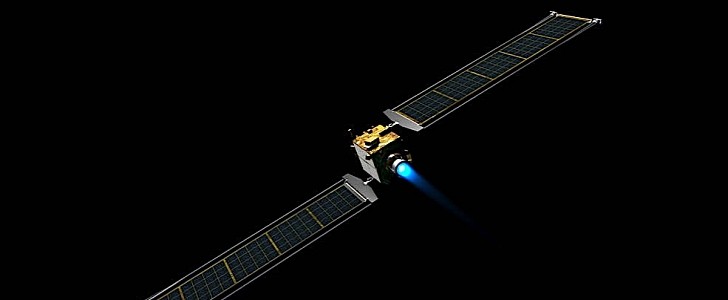Back in May 2021, NASA and others conducted a massive tabletop exercise, trying to see how ready humanity is to counter the threat of an asteroid impact. The conclusion is we’re far from ready, and there’s a big chance once an asteroid zeroes in on our planet, there’s not much we can do about it.
Provided an asteroid doesn’t hit us in the foreseeable future, we do have time to get ready though, and steps are being taken to see what would work. Given how using a nuclear device to obliterate the threat is not really an option at the moment, NASA is hard at work trying to see if deflection could be a solution.
For the past two years, the agency has been working on something called Double Asteroid Redirection Test. DART for short, we’re talking about a spacecraft that will head at high speeds toward the Didymos binary asteroid, slam into it, and see if that changes its course – hopefully, not toward our planet, as the rock currently poses no threat.
The latest update on DART tells us the spaceship has just received the solar arrays (called Roll-Out Solar Arrays, or ROSA) that will power it towards its celestial target, and the Didymos Reconnaissance and Asteroid Camera for Optical (DRACO) camera that will register the moments before the impact, getting it ready, in essence, for final system testing.
DART will launch on top of a SpaceX Falcon 9 rocket from Vandenberg Space Force Base this November. It will then travel through space for ten months, before reaching its target and getting destroyed during the impact in the fall of 2022.
According to NASA, the spacecraft should hit the smaller part of the Didymos binary asteroid at speeds of 15,000 mph (24,140 kph). That would effectively turn both DART and the gear it packs to dust, so other means of observation will be needed.
To that end, telescopes here on Earth will be trained on the asteroid, while the European Space Agency (ESA) will be sending up there in 2026 two small satellites to witness the effects of impact.
Full details on the DART mission will be unveiled here on autoevolution this weekend, so keep an eye out.
For the past two years, the agency has been working on something called Double Asteroid Redirection Test. DART for short, we’re talking about a spacecraft that will head at high speeds toward the Didymos binary asteroid, slam into it, and see if that changes its course – hopefully, not toward our planet, as the rock currently poses no threat.
The latest update on DART tells us the spaceship has just received the solar arrays (called Roll-Out Solar Arrays, or ROSA) that will power it towards its celestial target, and the Didymos Reconnaissance and Asteroid Camera for Optical (DRACO) camera that will register the moments before the impact, getting it ready, in essence, for final system testing.
DART will launch on top of a SpaceX Falcon 9 rocket from Vandenberg Space Force Base this November. It will then travel through space for ten months, before reaching its target and getting destroyed during the impact in the fall of 2022.
According to NASA, the spacecraft should hit the smaller part of the Didymos binary asteroid at speeds of 15,000 mph (24,140 kph). That would effectively turn both DART and the gear it packs to dust, so other means of observation will be needed.
To that end, telescopes here on Earth will be trained on the asteroid, while the European Space Agency (ESA) will be sending up there in 2026 two small satellites to witness the effects of impact.
Full details on the DART mission will be unveiled here on autoevolution this weekend, so keep an eye out.






